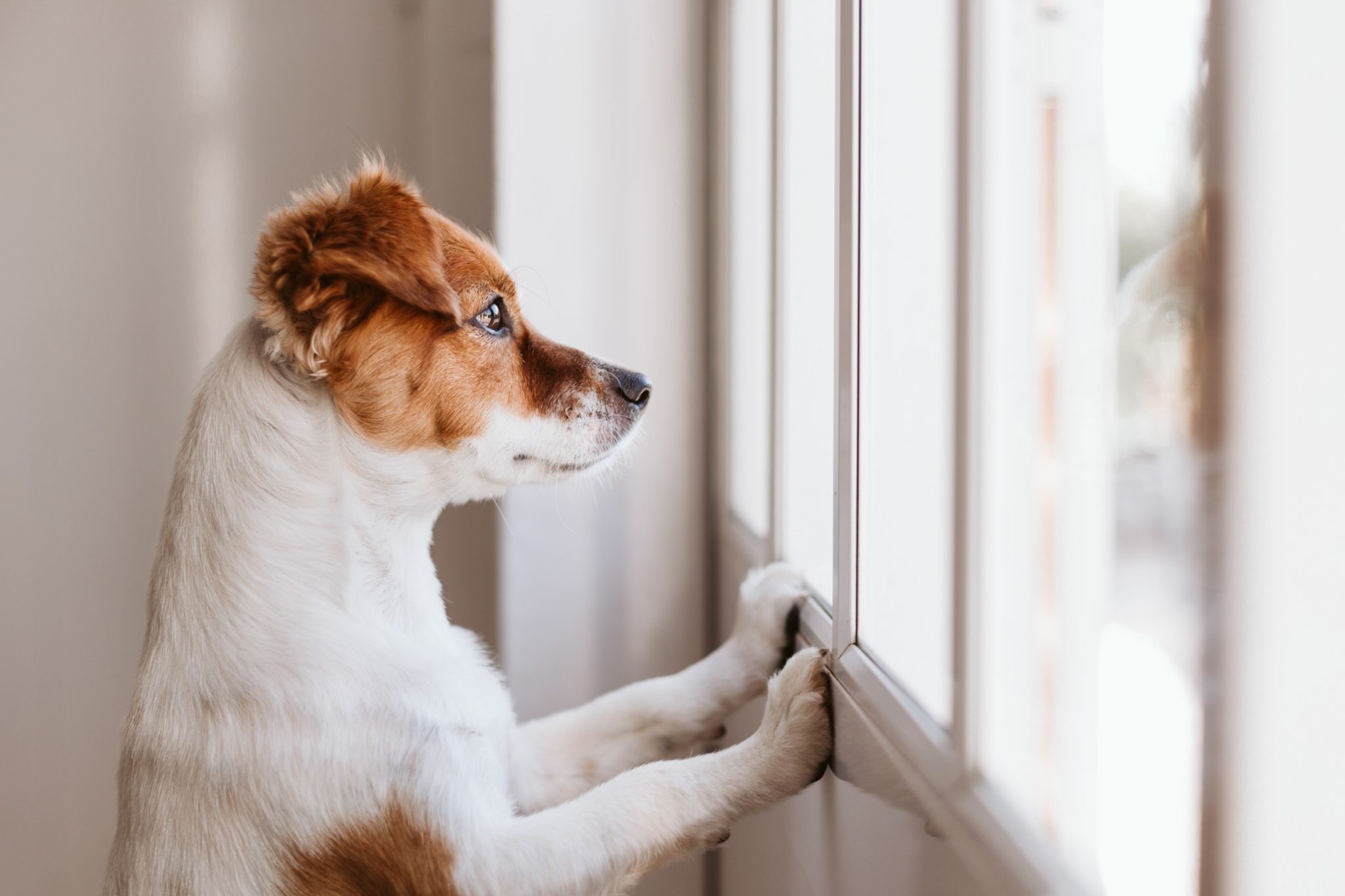
One thing we know for certain about our furry counterparts is that dogs and cats are creatures of habit. They thrive on consistency, and sudden scheduling changes can throw them for a loop! As many of us have been getting used to more time at home during the COVID-19 pandemic, we can’t help but wonder how our pets will react once we begin getting back into some of our routines.
Your dog or cat may be left wondering why everyone is rushing out the door instead of continuing to spend time at home. And separation anxiety can be very common in our furry counterparts. Luckily, we’ve got seven expert tips to help with the transition, and hopefully, avoid separation anxiety and negative habits from developing.
1. Try to keep your pet’s daily routine as consistent as possible even while you are currently home by keeping walks and meals around the same time each day. Try to mimic what your pet’s schedule will look like on a typical work or school day, each day.
2. A sudden decrease in time with the family can be difficult for pets, especially if they have become accustomed to having people with them all hours of the day. Make sure you give your pet ‘practice’ with shorter periods of alone time every day. For example, have them stay home while you go for a stroll or do some yard work, that way the transition is not abrupt and stressful. Gradually increase the duration you’re away from home as much as possible to prepare for longer stretches of time.
3. Your pet may be used to midday play sessions or walks. Ramping down that exercise and interaction due to schedule changes could leave your pet with pent up energy. Scheduling times for play that fit your new schedule can help your pal adjust.
4. Rotate your dog or cat’s toys to help to keep them novel and provide enrichment for your pets. Interactive toys or healthy chews can help keep your dog or cat active and engaged while you are gone. For dogs, toys stuffed with their favorite food and then frozen can provide entertainment and satisfy any foraging needs. There are many safe and tasty chew items available for dogs, so many that you can offer a different one every day of the week! Free games apps and battery-operated toys, available online, can entertain cats for hours of play on their own.
5. Leave on soothing music or TV for auditory or visual stimulation that can help keep your pet engaged when you’re not at home. Cats, in particular, really enjoy watching TV shows that feature animals.
6. While the family is away for longer periods of time during the day, you will want to have your pets feeling safe and secure at home. Be sure to look out for signs of anxiety such as nervous pacing and panting, vocalizing or trying to leave with you as you prepare to depart. While you’re gone, anxious pets may soil in the house or engage in destructive behavior, particularly of items that smell strongly of you.
7. To address your pet’s stress, you can also consider contacting a certified applied animal behaviorist, veterinary behaviorist or certified professional dog trainer, many of whom are offering services virtually during this time.
~At Heart Arrow We Love Pets~
Thanks to ASPCA for portions of this article
